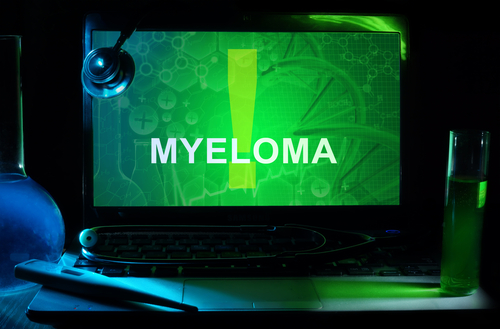ICER Analyzes Cost and Value of Drugs Used to Treat Multiple Myeloma in New Report

The Institute for Clinical and Economic Review (ICER), an independent nonprofit based in Boston that analyzes the value of drugs and other medical services, has released a new report detailing the clinical effectiveness, long-term cost-effectiveness, and potential budget impact of treatments for multiple myeloma (MM).
The report, “Treatment Options for Relapsed or Refractory Multiple Myeloma: Effectiveness, Value, and Value-Based Price Benchmarks,” intends to provide patients, providers, insurers, and policymakers with the information necessary to improve both the quality and value of care for MM patients.
ICER’s report focused on adults with MM whose disease has not responded to at least one previous line of treatment (i.e., refractory) or who have relapsed following treatment, and those currently not on maintenance treatment and not being considered for stem cell transplant.
Treatment regimens assessed were for relapsed and/or refractory multiple myeloma, including as second-, third-, or later-line therapies:
- Carfilzomib (Kyprolis) with lenalidomide (Revlimid) and dexamethasone (CFZ+LEN+DEX)
- Ixazomib (Ninlaro) with LEN+DEX (IX+LEN+DEX)
- Elotuzumab (Empliciti) with LEN+DEX (ELO+LEN+DEX)
- Panobinostat (Farydak) with bortezomib (Velcade) and DEX (PAN+BOR+DEX)
- Pomalidomide (Pomalyst) with low-dose DEX (POM+LoDEX)
- Daratumumab (Darzalex) monotherapy (DARA)
Its findings will be used to calculate value-based price benchmarks for the prescription drugs. According to ICER, “these price benchmarks reflect the drugs’ long-term cost-effectiveness for patients while also noting the price at which their potential short-term budget impact raises serious concerns for affordability across the entire health care system.”
In an institute press release, Steven D. Pearson, MD, MSc, president of ICER, said, “The introduction of newer regimens for second- and third-line use in multiple myeloma appears to confer clinical benefits in terms of lengthening progression-free survival, as well as improved quality of life. However, at current wholesale acquisition costs, the estimated long-term cost-effectiveness of these regimens exceeds commonly-cited thresholds.”
Results of the report will be presented on May 26 at the inaugural meeting of the Midwest Comparative Effectiveness Public Advisory Council (Midwest CEPAC), taking place in St. Louis, Missouri.






